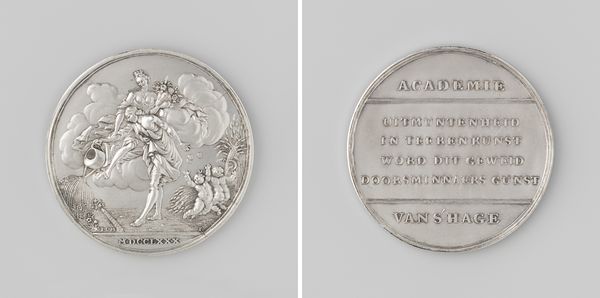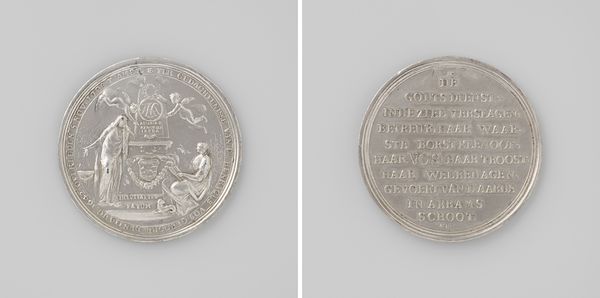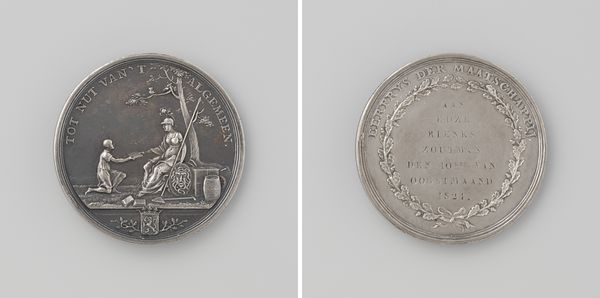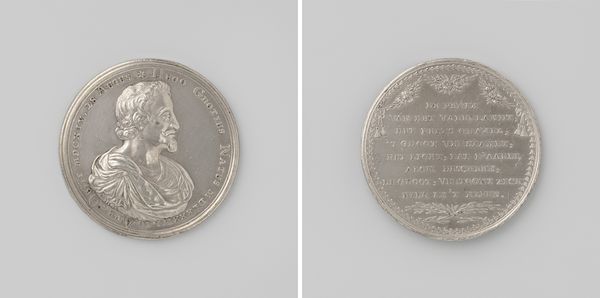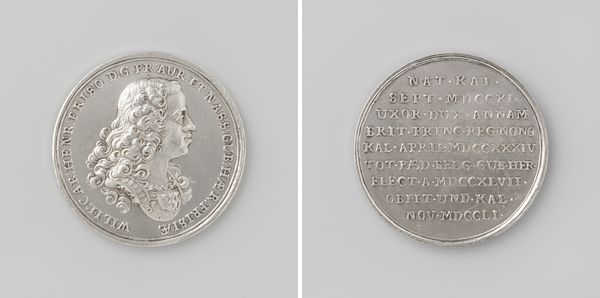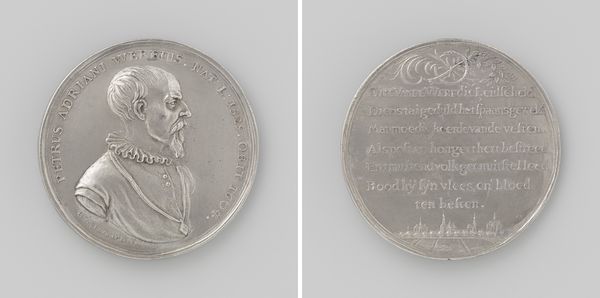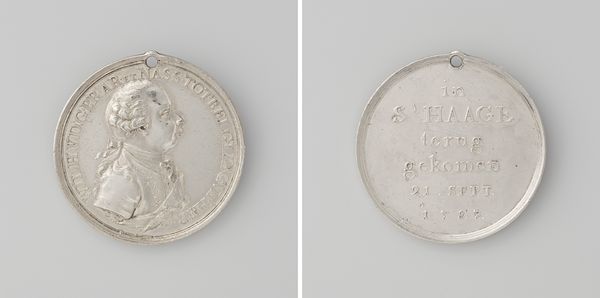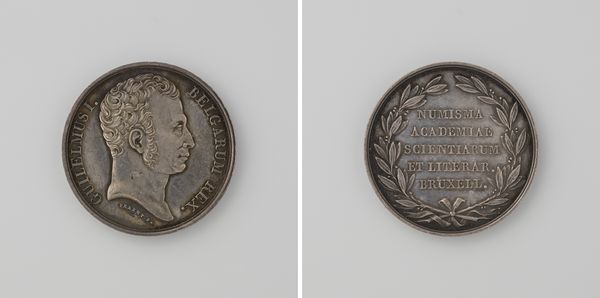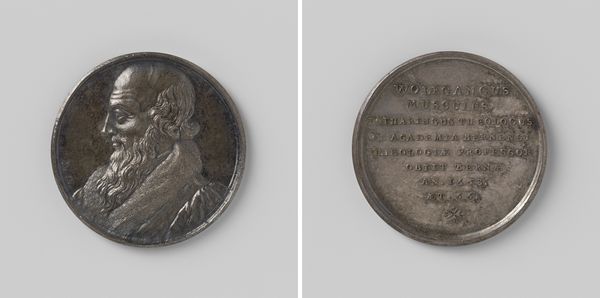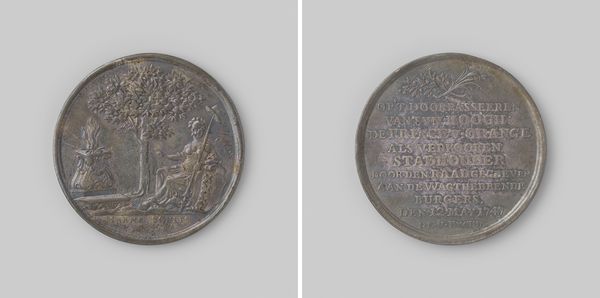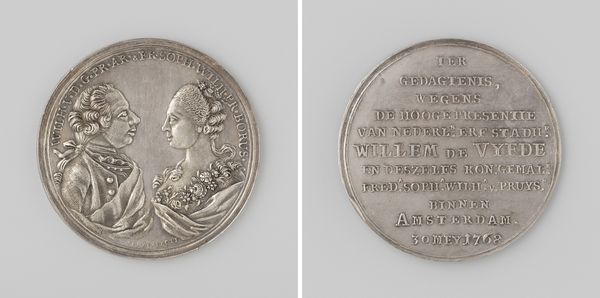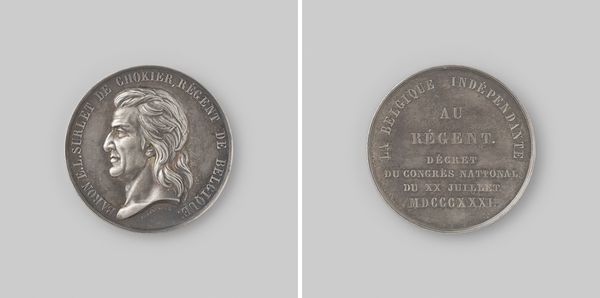
Eerste vrede van Parijs tussen Frankrijk en de geallieerden, ter ere van Karel Philip van Schwarzenberg en Clemens, prins Metternich 1814
0:00
0:00
metal, engraving
#
portrait
#
neoclacissism
#
metal
#
old engraving style
#
ancient-mediterranean
#
ceramic
#
history-painting
#
engraving
Dimensions: diameter 4.3 cm, weight 22.55 gr
Copyright: Rijks Museum: Open Domain
Curator: Let’s turn our attention to this engraving, "Eerste vrede van Parijs tussen Frankrijk en de geallieerden, ter ere van Karel Philip van Schwarzenberg en Clemens, prins Metternich,” created in 1814 by Franz Stuckhart. Editor: Its cool austerity really strikes me. The coldness of the metal, the formality of the portraits—it’s very calculated in its impact, wouldn’t you say? Curator: Absolutely. Commemorative objects like this served specific purposes, projecting power and solidifying historical narratives. It celebrates the Peace of Paris and, more importantly, the figures of Schwarzenberg and Metternich. Consider their roles as diplomats and military leaders—this isn't simply a work of art, it's political propaganda. Editor: I'm curious about the choice of metal as a medium. It speaks to permanence, doesn’t it? The engraver and workshop must have been focused on mass production, too, with implications for labor of the period. This wasn't about individual expression so much as reproducing imagery with an intended use-value and audience. Curator: Indeed. And we should unpack the visual language being employed here. Note the use of neoclassical portraiture—referencing ancient forms to align these figures with ideals of leadership and civilization. It suggests their actions are divinely sanctioned. Editor: Yes, there's an intentional visual connection being drawn to powerful symbols of historical movements and even myth. The engraving makes reference to these classical and Neoclassical influences in order to build and perpetuate a very specific idea about state power. I am drawn to consider the means through which that symbolism is spread. Curator: So when we look at something like this, we have to ask, whose narrative is being preserved and promoted? Who is included and, critically, who is excluded? It’s vital that we understand how artworks operate within power structures of their time. Editor: Exactly. Considering the object’s history allows us to examine the role of the artist as something of a technician—reproducing imagery for the sake of memorializing political figures through a certain material practice. Curator: Analyzing these dynamics offers insight into art's agency in shaping socio-political thought in 1814. Editor: Definitely food for thought about artistic intentions and wider applications. Thanks.
Comments
No comments
Be the first to comment and join the conversation on the ultimate creative platform.
